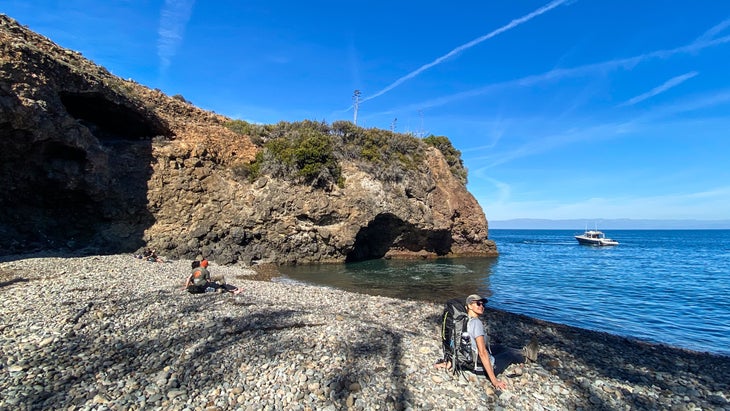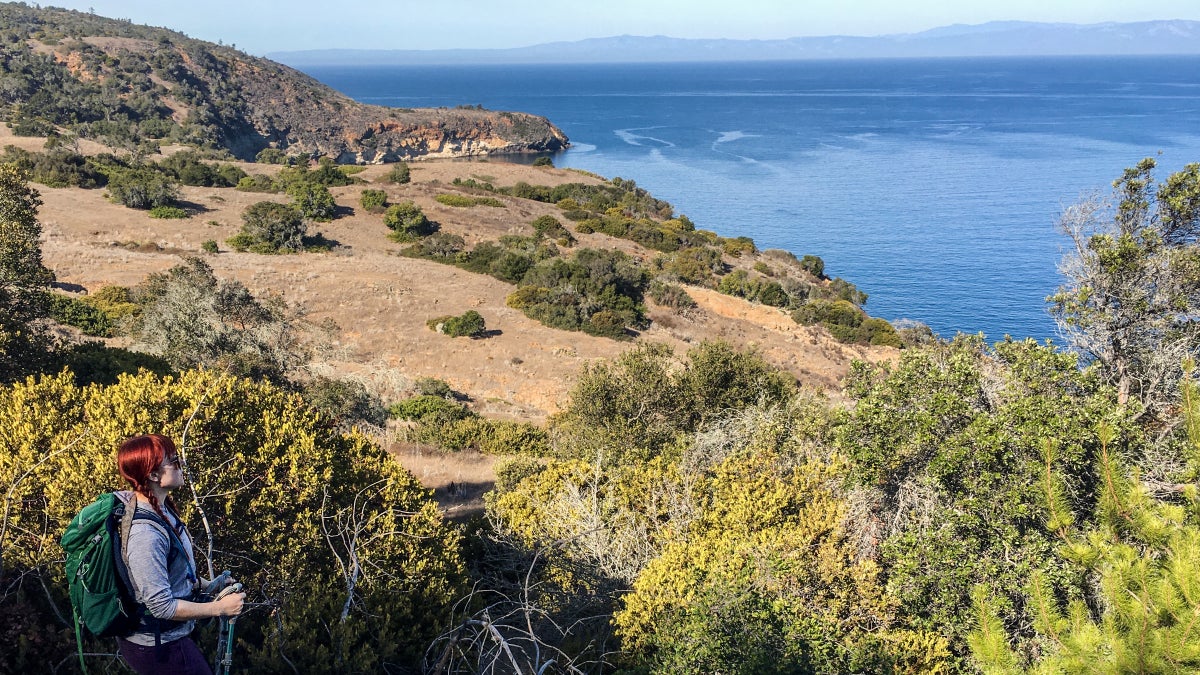No products in the cart.
Outdoor Adventure
Channel Islands National Park: A Quiet Refuge a Stone’s Throw from Los Angeles
63 Parks Traveler started with a simple goal: to visit every U.S. national park. Avid backpacker and public-lands nerd Emily Pennington saved up, built out a tiny van to travel and live in, and hit the road, practicing COVID-19 best safety protocols along the way. The parks as we know them are rapidly changing, and she wanted to see them before it’s too late. The Channel Islands is her 59th park visit.
As an 18-year resident of Los Angeles and an unabashed national-parks nerd, you would think that Channel Islands, a mere 87 miles from my hometown, would have pinged louder on my radar. But when I visited the park’s largest island, Santa Cruz, I was as clueless about this hidden SoCal escape as any other tourist.
The necessary ferry to get to and from the park often sells out, I knew that much, so I enlisted a girlfriend to tag along and booked our tickets months in advance. The December morning of our departure, after downing coffee like it was some enchanted, life-giving elixir, I blearily boarded the large Island Packers boat in Ventura Harbor, scanning the horizon for migrating whales.
Halfway into our 90-minute trip, dozens of silver dorsal fins arced out of the water, surrounding our vessel. My friend, Ave, and I glanced at each other, startled. “Ladies and gents, what we have here appears to be a group of common dolphins,” crackled the captain’s voice over the loudspeaker. “We’ve been seeing them out here a lot lately, with pods of over a thousand individuals.”
In every direction, slick, rubbery bodies leapt up above the surface as if welcoming us to the islands. I gasped through an enormous grin as the mammals submerged, came back up and caught some air, then submerged again. In the most populous state in the union, it can be easy to forget how quickly the ocean becomes the backcountry.
Once the ferry docked at Prisoners Harbor, Ave and I wasted no time in lacing up our boots and setting off on the two-mile trail toward Pelican Bay. The rocky cove was once a privately run sportsman’s paradise for fishing and wild-boar hunting, but now it sits inside a swath of land protected by the Nature Conservancy, with native species like live oak and once endangered Santa Cruz Island foxes on the rebound.
The trail gained a few hundred feet of elevation as it headed through California’s famous coastal chaparral. Scrubby stands of red-barked manzanita and thin-leaved chamise opened up to sweeping views of the Pacific Ocean, immense and brilliantly sapphire against my gaze. The two of us undulated up and down a sunny ridgeline, traversing hillsides covered with blades of golden grass.

By the time we arrived at Pelican Bay, we were ready for a well-earned lunch, and we plopped down onto the rocky beach with glee, listening to the percussive whooshing of the waves as they battered against nearby sea caves. As epic as the day had already been, the park had one more surprise in store for us.
The pointed ears and whiskered snout of an island fox crept into view, and I excitedly fumbled for my camera. These tiny canines, which weigh a scant four pounds, are now Santa Cruz’s top predator, but as recently as 2004, there were only a hundred left in the wild after an influx of non-native golden eagles began nesting there. Thanks to a dedicated conservation effort, over 1,200 of the foxes now roam freely, making sightings like this a real treat for island-goers.
This fox gracefully inched her way along the shore, sniffing for washed-up shellfish and errant bits of food, and in that moment, time seemed to stand still. I forgot that I was a mere two hours from the multilane highways that span the California coastline. As far as I was concerned, I had traveled back centuries, to an era when unique creatures like this one roamed and ruled the land.
A rare thing in our modern, mapped-out world, it was incredible to find a secluded wilderness at the doorstep of the state’s crowded shores.
63 Parks Traveler Channel Islands Info
Size: 249,354 acres
Location: Southern California, 20 miles west of Ventura
Created In: 1938 (national monument), 1980 (national park)
Best For: Hiking, diving, kayaking, wildlife viewing, Native history
When to Go: Island Packers travels to less trammeled Channel Islands like Santa Rosa, San Miguel, and Santa Barbara from March through November each year, though ferry service to Santa Cruz and Anacapa is year-round. Spring (40 to 67 degrees) brings spectacular wildflower displays. Summer (46 to 77 degrees) is considered high season, with ferries and campgrounds routinely filling up. Fall (41 to 76 degrees) sees fewer crowds and excellent water visibility; September is consistently pinned as the perfect month for kayaking. Winter (38 to 61 degrees) is brisk but offers a chance to explore the islands sans the throngs. (Note: Temperatures listed are for Santa Cruz Island.)
Where to Stay: Each of the park’s five islands boasts at least one developed campground, and all are open daily. On Santa Cruz, visitors can opt to pitch a tent at the large, shady Scorpion Canyon Campground or pack in their food and water for an epic backpacking trip up to view-filled Del Norte.
Mini Adventure: Take a day trip to Santa Cruz and go for a hike. Book an Island Packers ferry to either Scorpion Anchorage or Prisoners Harbor and be on the lookout for the island foxes as you wander through rare island flora to lookouts with magnificent coastal views. Cavern Point Loop (two miles round-trip) and Pelican Bay (four miles round-trip) both come highly recommended by the National Park Service.
Mega Adventure: Book a kayaking tour. The locally run Santa Barbara Adventure Company offers 2.5-to-3-hour guided Adventure Sea Cave Kayak trips that give intrepid paddlers of all levels a chance to explore some of the most stunning sea caves in the world. June through October are the best conditions (read: sunny and smoother water) for venturing into the caverns, and weekend trips tend to sell out weeks in advance.

